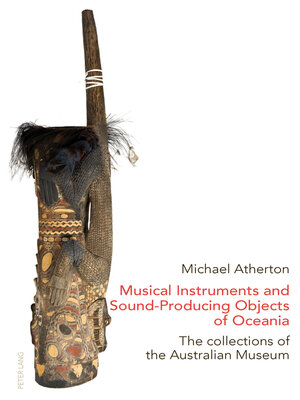Musical Instruments and Sound-Producing Objects of Oceania
ebook ∣ The collections of the Australian Museum
By Michael Atherton

Sign up to save your library
With an OverDrive account, you can save your favorite libraries for at-a-glance information about availability. Find out more about OverDrive accounts.
Find this title in Libby, the library reading app by OverDrive.



Search for a digital library with this title
Title found at these libraries:
| Library Name | Distance |
|---|---|
| Loading... |
This book contributes to our knowledge and awareness of musical instruments and sound-producing objects in the region called Oceania. The author uses principles of organology to describe a research project at the Australian Museum. He explains the classification, provenance and cultural significance of diverse objects that were individually examined and measured.
Four main sections are reflecting the regions of Oceania: Indigenous Australia, Melanesia, Micronesia, and Polynesia. Aboriginal and Torres Strait Islander musical instruments and sound-producing objects reveal a great diversity, as do the instruments in the Melanesian section, in particular Papua and New Guinea; some objects being exquisitely designed and crafted. The Polynesian section includes objects collected on the voyages of Captain James Cook, as well as different types of flute. By combining introductory essays with quality photographs and a numbered catalogue of basic nomenclature, vernacular names and dimensions, the book constitutes a valuable resource.
Four main sections are reflecting the regions of Oceania: Indigenous Australia, Melanesia, Micronesia, and Polynesia. Aboriginal and Torres Strait Islander musical instruments and sound-producing objects reveal a great diversity, as do the instruments in the Melanesian section, in particular Papua and New Guinea; some objects being exquisitely designed and crafted. The Polynesian section includes objects collected on the voyages of Captain James Cook, as well as different types of flute. By combining introductory essays with quality photographs and a numbered catalogue of basic nomenclature, vernacular names and dimensions, the book constitutes a valuable resource.







